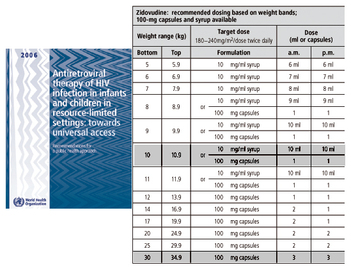 The euphemistically titled WHO publication pictured
above (and available as a PDF file
here) is
one of the most frightening compilations I have ever seen. As lawyers
are fond of saying -- it is a res
ipsa loquitor, speaking, in this instance, entire volumes
for itself.
For these reasons I will
refrain from providing much deconstructive comment here, and leave it
for the motivated reader to
discover whether I write accurately or no.
The euphemistically titled WHO publication pictured
above (and available as a PDF file
here) is
one of the most frightening compilations I have ever seen. As lawyers
are fond of saying -- it is a res
ipsa loquitor, speaking, in this instance, entire volumes
for itself.
For these reasons I will
refrain from providing much deconstructive comment here, and leave it
for the motivated reader to
discover whether I write accurately or no.
I will warn the brave of heart and strong of stomach, however, that you are about to enter a world of bureaucratic language hell that puts George Orwell to shame. A hell in which some of the most toxic drugs ever legally synthesized are authoritatively touted as life prolonging medicines, and where table after table after table provide presumably, arithmetically illiterate "health care" workers with dosage recommendations in which the word "caution" appears exactly four times in a way that almost defies what was once its meaning.
I will also briefly note the following:
- The recommended AZT dose for African infants and small children is the same per kg of body weight as the original high-dose AZT that is widely acknowledged to have killed an entire generation of grown men, and which has not been administered for almost a decade (see here for a short history). In the words of Claus Koehnlein, a German physician who has treated AIDS patients for ten years without AZT and its cousins:
"AZT kills everything that depends on DNA replication -- that means opportunistic infections and also cancers will respond to the treatment -- but at a high price.
At the same time you are killing the opportunists with AZT, you are killing all dividing cells quite effectively - that includes those in the bone marrow, the very source of our immune cells. That's the dilemma: In treating AIDS patients with AZT, we bring about the very illness we seek to bring under control. And we all knew, orthodox AIDS doctors and borderline rebels both, that the initial treatment with 1500 mg was an overkill.
Everybody admits that now. Yes, it was too much. Maybe some people died, but that's history, that's the way medicine has always worked. Let's look forward. Today we have this wonderful triple therapy, and mortality rates are dropping.
So what, I say. We virtually killed a whole generation of AIDS patients without even noticing it because the symptoms of the AZT intoxication were almost indistinguishable from AIDS. And the placebo control, which could have warned us, was for "ethical reasons" cut off prematurely. Indeed, AZT intoxication has given HIV infection such a lethal outcome that the whole world still believes that HIV is a deadly virus."
- The WHO collective that produced this blueprint makes certain to inform its intended users at every opportunity that without these fancifully trade named chemicals the babies and small children in their care will be dead of AIDS in a few short years. South African barrister Anthony Brink, in his definitive study of AZT, puts the truth to that lie:
"Just where this notion comes from that HIV-positive children tend to die is hard to fathom. In 1995, writing in the Journal of the American Medical Association, Davis et al reported that “Approximately 14,920 HIV-infected infants were born in the United States between 1978 and 1993. Of these, an estimated 12,240 children were living at the beginning of 1994; 26% were younger than 2 years, 35% were aged 2 to 4 years, and 39% were aged 5 years or older.” Which means that over 80% of children diagnosed HIV-positive at birth are still alive. No prizes for guessing what drug probably killed the others. On 18 May 1999, Dr. Warren Naamara, the Kenya adviser for the UNAIDS programme said, “Many HIV-positive children were now living beyond the usual five years and into their teens, bringing new challenges in the fight against the HIV/AIDS [and] more children born with the virus that causes AIDS now survive beyond the age of ten.” To the chagrin of the ‘AIDS experts’, these children just won’t die on time. How’s this for another stunning death wish: “The UNAIDS official said the new trend posed a threat to the management of disease in the five to 14 years age bracket, which was previously perceived as the hope for the next millennium, since it was largely free of the disease. Naamara…said HIV-positive children in sub-Sahara Africa were likely to contribute to the spread of the disease as most were orphans with no education or skills to derive a livelihood from.” (per PANA report, 20 May 1999.)"
-
 The final pages, Annex F: Serious
Acute and Chronic Toxicities, are not
for any but the bravest of
hearts and strongest of stomachs. The annex is remarkable
for what it does not say
as much as for what it
does. How any health care practitioner could read through its
contents and not need a strong drink afterwards is beyond me.
The final pages, Annex F: Serious
Acute and Chronic Toxicities, are not
for any but the bravest of
hearts and strongest of stomachs. The annex is remarkable
for what it does not say
as much as for what it
does. How any health care practitioner could read through its
contents and not need a strong drink afterwards is beyond me.